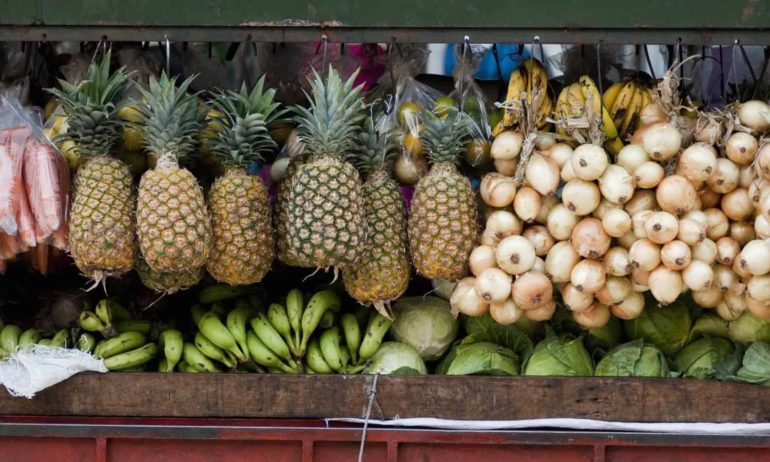My first tentative steps into one of Costa Rica’s main retailers were followed by a mix of emotions: Confusion. Incredulity. Shock. How is life so expensive here? From cornflakes to cheese, chocolate to chickpeas— the prices I saw at the grocery store were significantly higher than what I am used to in Europe.
According to the Costa Rican National Institute of Statistics and Censuses (Instituto Nacional de Estadística y Censos), the cost of the “standard food basket,” or the amount of food needed for one person’s basic nutrition, amounted to US$90 per month in January 2015, an increase of 8 percent in one year. The average per capita income here is US$12,900, and the poorest 20 percent only earn around US$100 per month. No wonder Costa Ricans, or Ticos, spend around 30 percent of their annual income on food and drink. They are in good company: a cross-country comparison study recently found that in many countries, 25 to 45 percent of yearly income is dedicated to ensuring households’ food security. The European and North American experience of only earmarking 6 to 11 percent of household expenditure for food is the exception.
Reasons behind the high cost of living are plentiful. Costa Rica’s English-language newspaper The Tico Times blamed, in equal parts, inflation, high fuel prices, and the country’s strong reliance on imported goods. Indeed, wander into a supermarket and you might think you found a secret pathway into the U.S.; well-known brand names abound, at prices frequently twice as high as in their country of origin. The elation of finding Nutella is etched into my memory—but then I spotted its US$10 price tag, and passed by its shelf.
One notable exception is the abundance of comparatively cheap fast food joints. According to The Economist‘s Big Mac index, McDonald’s Big Mac burgers in Costa Rica are even cheaper—adjusting for purchasing power—than in the U.S. The cost of a complete “McMeal” undercuts that of a typical Tico casado, or dish of rice, beans, and plantains with a salad. Furthermore, urbanization and an economic shift toward service jobs means that half of the country’s population lives in the metropolitan area around the capital of San Jose. Traffic jams make commutes of up to two hours each way the norm. As of 2014, 57.7 percent of Ticos are overweight.
Yet, there are signs of change. The country’s nutrition guide highlights the benefits of the traditional rice and beans as a satiating meal, advocates for moving more, and encourages increased portions of fruits and vegetables.
Once you step outside of the supermarkets, fruits and vegetables miraculously become affordable again. Street vendors hawk two avocados for US$2 and four mangos for the same price. Going to local markets on the weekends is a popular pastime for middle-class families, and nutrition-minded producers have established several organic farmers’ markets.
How will the eating habits and preferences of Ticos change? I’ll share the optimism of a local organic vendor I recently met: “One person, and one taste, at a time.”













